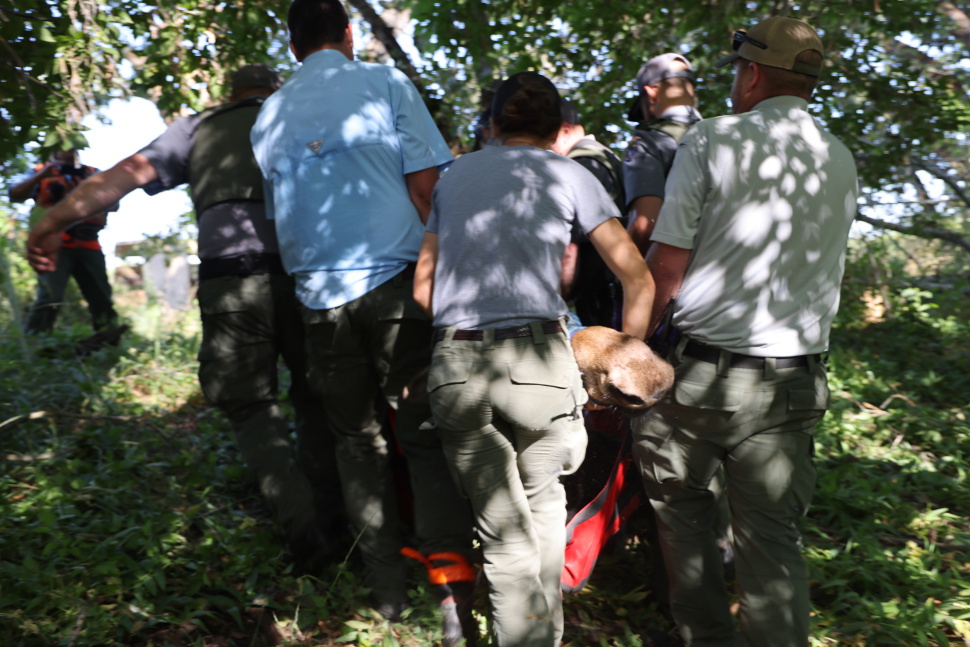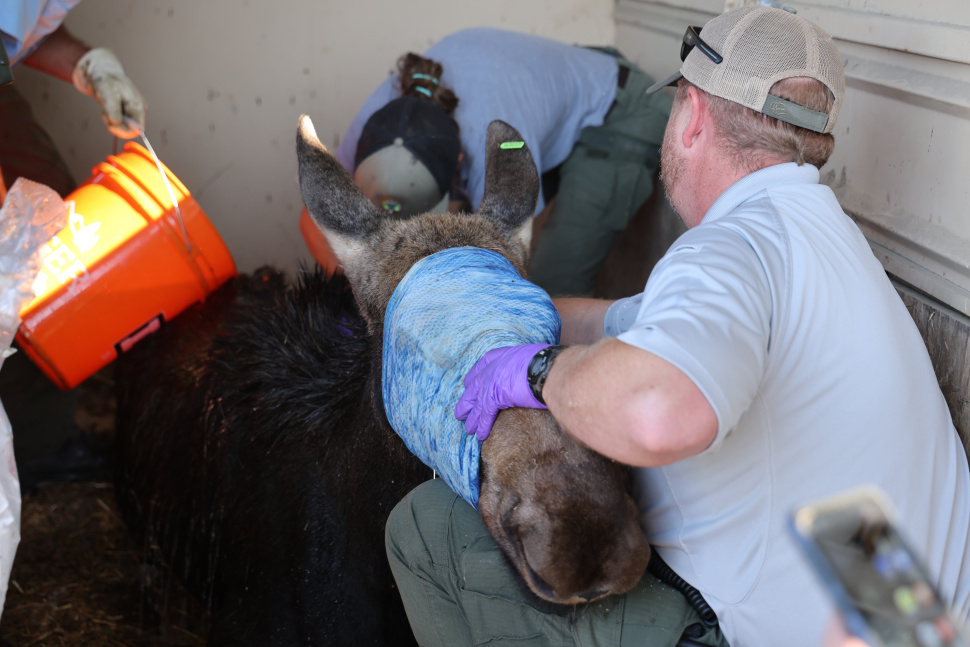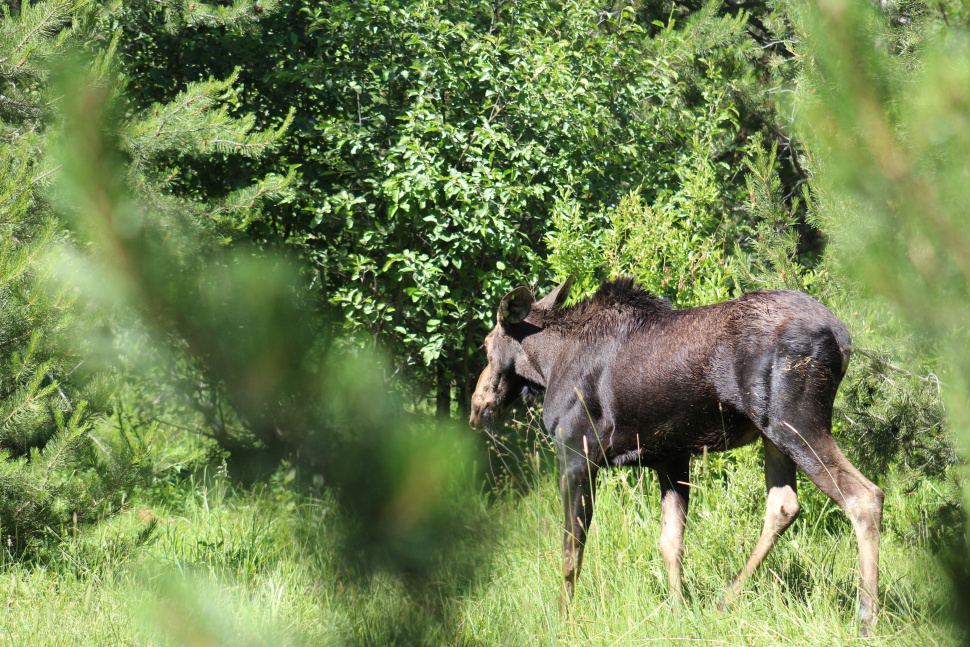On Thursday, July 20, Southwest Region wildlife and enforcement staff successfully darted and relocated a two-year-old cow moose that had spent the prior few days in a community just north of Boise. Staff moved the moose to a more suitable area near Smiths Ferry, away from town and people.
Fish and Game began receiving reports of a cow moose in the community of Hidden Springs on July 18. Wildlife biologists from the Southwest Region office initially reached out directly to community residents, encouraging them to keep a respectful distance from the moose in hopes that it would move out of the area on its own.
When the moose didn’t move on after a couple days, Fish and Game staff made the decision to attempt to move it.

“Unfortunately, this animal was located in an area in close proximity to walking paths that have high foot traffic and, frequently, dogs walking off-leash,” said Regional Supervisor Josh Royse. “Ultimately, it became clear that the moose was not going to move out of the area on its own, and the potential for conflict with residents and pets was too high to allow it to stay there for any longer.”
Moose, like all other big game animals, are wild and highly unpredictable. Although most wildlife species seem to be friendly and non-threatening, their behavior can change in an instant if they feel threatened, or if they do not have adequate space to move freely.
Throughout the state, Fish and Game handles occurrences of moose in town on a case-by-case basis, but it is always preferred that a moose moves out of town, or a problem area, on their own. Darting and relocating any animal involves the use of potent immobilization drugs, which produce significant physiological effects and carry inherent risks even in a controlled environment — not only for the animal, but also Fish and Game staff.

There are very real risks of an animal dying as a result of using an immobilization drug, including those associated with drugs themselves, or from situations that arise before the immobilization drug kicks in (such as an animal running into traffic after being darted). Even in the best of situations, darting wildlife is stressful to the animals.
“There is a known mortality risk when we deploy these drugs for the purpose of relocating an animal, and for that reason, we don’t take these decisions lightly,” Royse said. “Ultimately, we have to balance public safety with the safety of the animal, and in certain situations, the interests of public safety outweigh the risks associated with relocation.”
Fish and Game staff do everything in their power to ensure those risks are minimized. The relocation of this moose involved additional complexities, given the extremely hot weather conditions and the challenge of having to locate, dart and safely move the animal out of an area surrounded by a high-use walking path.
The team of biologists and enforcement officers arrived in the Hidden Springs neighborhood early in the morning, before air temperatures rose and when they expected human activity in the area to be lower. When they located the moose in a creek bed, staff were posted on the walking path to keep residents and the moose safe, and the operation went off without a hitch.

After darting the moose, it took less than 30 minutes to load it into a trailer and reverse the effects of the drug. During that time, biologists were dousing the animal with cool water and ice to keep its body temperature at a safe level. By the early afternoon, it was walking out of the trailer into its new home near Smiths Ferry.

Moose are common in Central Idaho and occasionally wander as far south as the Treasure Valley. In July 2019, for example, Idaho Fish and Game crews successfully sedated, captured, transported and released a yearling cow moose from Nampa.

